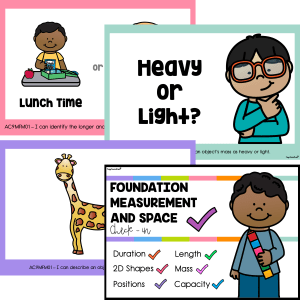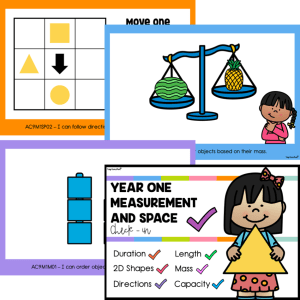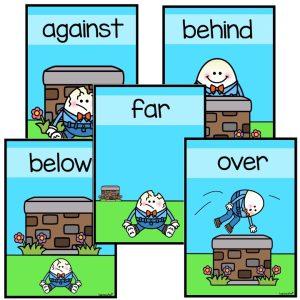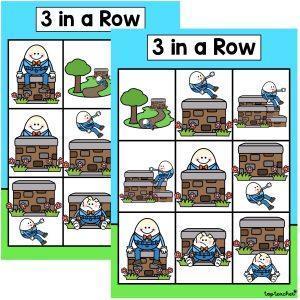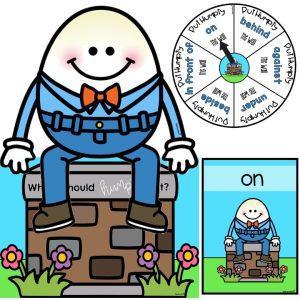Where is the Mouse? Positional Language Booklet

Description
Practise positional language in a hands-on and engaging way with our Where is the Mouse? Positional Language Booklet! This eight-page mini-book offers students the opportunity to read simple instructions and apply their understanding of spatial vocabulary by placing a mouse in the correct position on each page. With a focus on common positional terms such as ‘on’, ‘under’, ‘in’, and ‘next to’, this resource is perfect for early learners building their oral language, reading and comprehension skills.
Each page of the booklet includes a clear, student-friendly sentence prompt and space for students to glue a cut-out mouse in the correct location. The task encourages a combination of reading comprehension, spatial awareness and fine motor development. With no page shuffling required, teachers simply print and cut down the middle of the page to create two ready-to-use booklets—saving time and making prep quick and easy.
Where is the Mouse? Positional Language Booklet is ideal for Foundation and early Year 1 classrooms and can be used as part of a literacy centre, small group instruction, or whole-class task. The finished booklet serves as an excellent take-home resource, allowing students to share their learning and growing vocabulary with parents and carers.
Key Learning Outcomes:
- ✅ Recognise and apply positional language in context
- ✅ Match written instructions with visual placement
- ✅ Demonstrate spatial understanding through hands-on tasks
- ✅ Strengthen early reading skills through repeated sentence structures
- ✅ Develop fine motor skills through cutting and gluing
What’s Included:
- 8-page positional language mini-booklet
- Mouse cut-out sheet for gluing activities
- Simple, repetitive sentence structure for beginner readers
- No-shuffle print format—just print, cut, and staple
Materials Needed:
- Printed booklet pages (cut down the middle to create two booklets)
- Mouse image sheet (one per student)
- Scissors, glue sticks and coloured pencils
How to Use:
- Print and cut the booklet pages to create two booklets per set.
- Introduce the activity by reviewing positional words with students.
- Have students read each page and glue the mouse in the correct location.
- Encourage students to colour and personalise their booklet as they go.
- Send completed booklets home as a parent communication tool or include in student portfolios.
Ideas for Classroom Use:
- 💡 Use during a literacy rotation focused on spatial language
- 💡 Assign as a take-home activity to reinforce classroom learning
- 💡 Include in a positional language display or classroom reading corner
- 💡 Pair with manipulatives like toy mice and boxes for oral language modelling
- 💡 Use as part of a unit on direction, location or mapping skills
Top Teacher Tips:
- 💛 Pre-cut mouse images for younger students to support independence
- 💛 Highlight the positional word on each page to support emerging readers
- 💛 Laminate a sample booklet to use during group demonstrations
- 💛 Encourage students to read their booklet aloud to a classmate or adult
Where is the Mouse? Positional Language Booklet is a simple, effective and engaging way to reinforce spatial concepts through reading and hands-on learning—perfect for building foundational language and comprehension skills in the early years.
Additional information
| Australian Curriculum Code | AC9M1SP02, AC9MFSP02 |
|---|---|
| File Format |
Australian Curriculum V9
F - 6
Lorem ipsum dolor sit amet, consectetur adipiscing elit.
Lorem ipsum dolor sit amet, consectetur adipiscing elit.
Lorem ipsum/ Lorem ipsum/ Lorem ipsum
Lorem ipsum dolor sit amet, consectetur adipiscing elit.
Lorem ipsum dolor sit amet, consectetur adipiscing elit.
Lorem ipsum/ Lorem ipsum/ Lorem ipsum
Lorem ipsum dolor sit amet, consectetur adipiscing elit.
Lorem ipsum dolor sit amet, consectetur adipiscing elit.
Lorem ipsum/ Lorem ipsum/ Lorem ipsum
Lorem ipsum dolor sit amet, consectetur adipiscing elit.
Lorem ipsum dolor sit amet, consectetur adipiscing elit.
Lorem ipsum/ Lorem ipsum/ Lorem ipsum
Lorem ipsum dolor sit amet, consectetur adipiscing elit.
Lorem ipsum dolor sit amet, consectetur adipiscing elit.
Lorem ipsum/ Lorem ipsum/ Lorem ipsum
